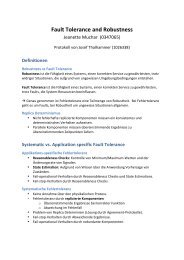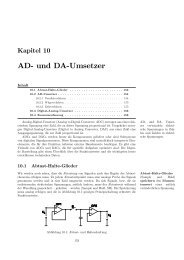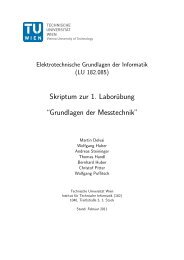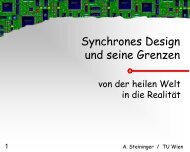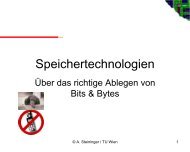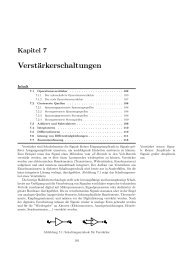Introduction to Microcontrollers
Introduction to Microcontrollers
Introduction to Microcontrollers
Create successful ePaper yourself
Turn your PDF publications into a flip-book with our unique Google optimized e-Paper software.
1.1. INTRODUCTION 5<br />
its development, which increases the performance demands even more. For small 8-bit controllers,<br />
however, only the application has <strong>to</strong> be considered. Here, rough estimations can be made for example<br />
based on previous and/or similar projects.<br />
The basic internal designs of microcontrollers are pretty similar. Figure 1.4 shows the block<br />
diagram of a typical microcontroller. All components are connected via an internal bus and are all<br />
integrated on one chip. The modules are connected <strong>to</strong> the outside world via I/O pins.<br />
Microcontroller<br />
Processor<br />
Core<br />
Digital I/O<br />
Module<br />
...<br />
SRAM<br />
Serial<br />
Interface<br />
Module<br />
Internal Bus<br />
EEPROM/<br />
Flash<br />
Analog<br />
Module<br />
...<br />
Counter/<br />
Timer<br />
Module<br />
Interrupt<br />
Controller<br />
Figure 1.4: Basic layout of a microcontroller.<br />
The following list contains the modules typically found in a microcontroller. You can find a more<br />
detailed description of these components in later sections.<br />
Processor Core: The CPU of the controller. It contains the arithmetic logic unit, the control unit,<br />
and the registers (stack pointer, program counter, accumula<strong>to</strong>r register, register file, . . . ).<br />
Memory: The memory is sometimes split in<strong>to</strong> program memory and data memory. In larger controllers,<br />
a DMA controller handles data transfers between peripheral components and the memory.<br />
Interrupt Controller: Interrupts are useful for interrupting the normal program flow in case of (important)<br />
external or internal events. In conjunction with sleep modes, they help <strong>to</strong> conserve<br />
power.<br />
Timer/Counter: Most controllers have at least one and more likely 2-3 Timer/Counters, which can<br />
be used <strong>to</strong> timestamp events, measure intervals, or count events.<br />
Many controllers also contain PWM (pulse width modulation) outputs, which can be used <strong>to</strong><br />
drive mo<strong>to</strong>rs or for safe breaking (antilock brake system, ABS). Furthermore the PWM output<br />
can, in conjunction with an external filter, be used <strong>to</strong> realize a cheap digital/analog converter.<br />
Digital I/O: Parallel digital I/O ports are one of the main features of microcontrollers. The number<br />
of I/O pins varies from 3-4 <strong>to</strong> over 90, depending on the controller family and the controller<br />
type.



